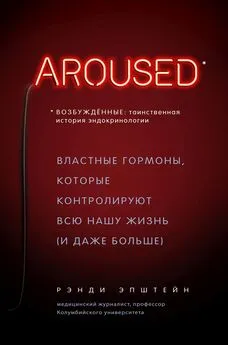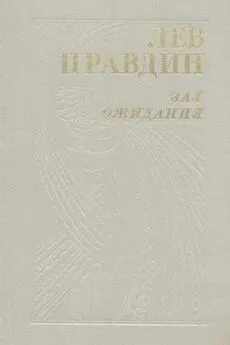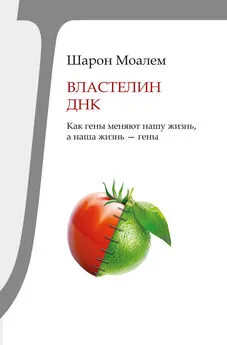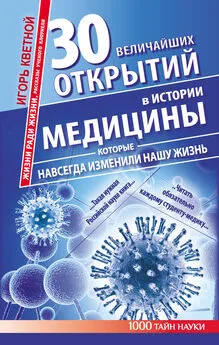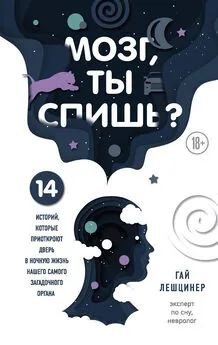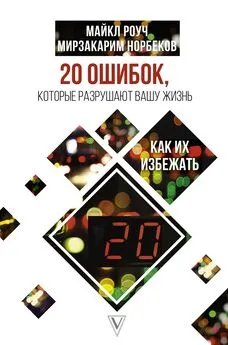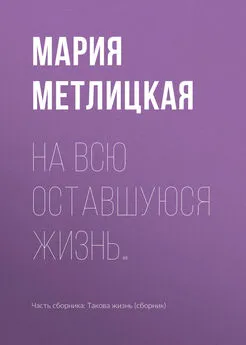Рэнди Эпштейн - Возбуждённые: таинственная история эндокринологии. Властные гормоны, которые контролируют всю нашу жизнь (и даже больше)
- Название:Возбуждённые: таинственная история эндокринологии. Властные гормоны, которые контролируют всю нашу жизнь (и даже больше)
- Автор:
- Жанр:
- Издательство:Литагент 5 редакция «БОМБОРА»
- Год:2019
- Город:Москва
- ISBN:978-5-04-098996-6
- Рейтинг:
- Избранное:Добавить в избранное
-
Отзывы:
-
Ваша оценка:
Рэнди Эпштейн - Возбуждённые: таинственная история эндокринологии. Властные гормоны, которые контролируют всю нашу жизнь (и даже больше) краткое содержание
Возбуждённые: таинственная история эндокринологии. Властные гормоны, которые контролируют всю нашу жизнь (и даже больше) - читать онлайн бесплатно ознакомительный отрывок
Интервал:
Закладка:
6. Henderson, The Life of Ernest Starling .
7. Rom Harré, “Pavlov’s Dogs and Schrödinger’s Cat: Scenes from the Living Laboratory,” (Oxford: Oxford University Press, 2009).
8. Там же.
9. Irvin Modlin and Mark Kidd, “Ernest Starling and the Discovery of Secretin,” Journal of Clinical Gastroenterology 32, no. 3 (2001): 187–192.
10. Barry H. Hirst, “Secretin and the Exposition of Hormonal Control,” Journal of Physiology 560, no. 2 (2004): 339.
11. W. M. Bayliss and Ernest H. Starling, “Preliminary Communication on the Causation of the So-Called ‘Peripheral Refl ex Secretion’ of the Pancreas,” Lancet 159, no. 4099 (1902): 813.
12. Modlin and Kidd, “Ernest Starling and the Discovery of Secretin.”
13. W. M. Bayliss and Ernest H. Starling, “On the Causation of the So-Called ‘Peripheral Refl ex Secretion’ of the Pancreas (Prelmiinary Communication),” Proceedings of the Royal Society B69 (1902): 352–353.
14. Modlin and Kidd, “Ernest Starling and the Discovery of Secretin.”
15. Hirst, “Secretin and the Exposition of Hormonal Control.”
16. Jessica Y. S. Chu et al., “Secretin as a neurohypophysial factor regulating body water homeostasis,” PNAS 106, no. 37 (2009): 15961–15966.
17. Bayliss and Starling, “On the Causation.”
18. Lizzy Lind af Hageby and Leisa Katherina Schartau, Shambles of Science: Extracts from the Diary of Two Students of Physiology (London: Ernest Bell, 1903).
19. Там же.
20. Mason, The Brown Dog Affair , 11.
21. Подробности дела позаимствованы из следующих источников: “Bayliss v. Coleridge,” British Medical Journal 2, no. 2237 (1903): 1298–1300; “Bayliss v. Coleridge (Continued),” British Medical Journal 2, no. 2238 (1903): 1361–1371; and “Was It Torture? The Ladies and the Dogs, Doctors and the Experiments,” Daily News , November 18, 1903.
22. “He Liveth Best Who Loveth Best, All Things Both Great and Small,” Daily News , November 19, 1903.
23. Mason, The Brown Dog Affair , 19–20.
24. “The Vivisection Case,” Globe and Traveler , November 19, 1903.
25. Ernest H. Starling, The Croonian Lectures on the Chemical Correlation of the Functions of the Body , Royal College of Physicians, 1905, доступно в интернете по адресу: archive.org/details/b2497626x.
26. Там же.
27. Medvei, A History of Endocrinology , 27; Hirst, “Secretin and the Exposition of Hormonal Control.”
28. Sir Humphrey Rolleston, “Endocrines in Theory and Practice,” British Medical Journal 1, no. 3984 (1937): 1033–1036.
29. Там же.
30. Henderson, The Life of Ernest Starling .
31. Starling, The Croonian Lectures , 35.
32. Henderson, The Life of Ernest Starling , 153.
33. “Battersea Has a Brown Dog,” editorial, New York Times , January 8, 1908.
34. Marjorie F. M. Martin, “The Brown Dog of University College,” British Medical Journal 2, no. 4993 (1956): 661.
35. “Battersea Loses Famous Dog Statue,” New York Times , March 13, 1910.
36. Hilda Kean, “The Smooth Cool Men of Science: The Feminist and Social Response to Vivisection,” History Workshop Journal , no. 40 (1995): 16–38.
Биографические данные о Харви Кушинге позаимствованы из следующих источников: Michael Bliss, Harvey Cushing: A Life in Surgery (New York: Oxford University Press, 2005), и Aaron Cohen-Gadol and Dennis D. Spencer, The Legacy of Harvey Cushing (New York: Thieme Medical Publishers, 2007); во второй книге приводятся фотографии операций Кушинга (их можно найти на выставке в Йельском университете). Также я просмотрела переписку Кушинга в Harvey Williams Cushing Papers, MS 160, Manuscripts and Archives, Sterling Memorial Library, Yale University. Я взяла интервью у доктора Денниса Спенсера, профессора отделения нейрохирургии им. Харви и Кейт Кушингов Йельского университета; доктора Кристофера Джона Уола, хирурга-ортопеда из Ассоциации врачей-ортопедов (Сиэтл, штат Вашингтон); доктора Тары Брюс, акушера-гинеколога (Хьюстон, Техас); доктора Жиля Солитера, отставного невропатолога; и Терри Дагради, фотографа и координатора Центра Кушинга в Йельском университете.
1. Bliss, Harvey Cushing , 166.
2. Там же, 274.
3. Доктор Деннис Спенсер, интервью автора.
4. Bliss, Harvey Cushing , 481.
5. Courtney Pendleton et al., “Harvey Cushing’s Attempt at the First Human Pituitary Transplantation,” Nature Reviews Endocrinology 6 (2010): 48–52.
6. “Part of Brain Replaced: That of Dead Infant Put in Cincinnati Man’s Head, First of its Kind,” Baltimore Sun , March 26, 1912; “Given Baby’s Brain,” Washington Post , March 26, 1912; “Brain of Still-Born Infant Used to Restore Man’s Brain,” Atlanta Constitution , March 27, 1912.
7. Harvey Cushing, “Medical Classic: The Functions of the Pituitary Body,” American Journal of the Medical Sciences 281, no. 2 (1981): 70–78.
8. Harvey Cushing, “The Basophil Adenomas of the Pituitary Body and Their Clinical Manifestations (Pituitary Basophilism),” Bulletin of the Johns Hopkins Hospital 1, no. 3 (1932): 137–183; Harvey Cushing, The Pituitary and Its Disorders: Clinical States Produced by Disorders of the Hypophysis Cerebri (Philadelphia: J. B. Lippincott, 1912).
9. Wouter W. de Herder, “Acromegalic Gigantism, Physicians and Body Snatching, Past or Present,” Pituitary 15 (2012): 312–318.
10. Cushing, The Pituitary and Its Disorders .
11. “Uglies,” Time , May 2, 1927.
12. John F. Fulton, Harvey Cushing: A Biography (Springfi eld, IL: Charles C. Thomas, 1946), 304.
13. “Pituitary Tumors Treatment (PDQ) Patient Version,” National Cancer Institute , 2016, http://www.cancer.gov/types/pituitary/patient/pituitary-treatment-pdq.
14. V. C. Medvei, “The History of Cushing’s Disease: A Controversial Tale,” Journal of the Royal Society of Medicine 84 (1991): 363–366.
15. Там же.
16. Cushing, “The Basophil Adenomas of the Pituitary Body.”
17. Fulton, Harvey Cushing .
18. Доктор Жиль Солитер, интервью автора.
19. Доктор Кристофер Джон Уол, интервью автора.
20. Christopher John Wahl, “The Harvey Cushing Brain Tumor Registry: Changing Scientifi c and Philosophic Paradigms and the Study of the Preservation of Archives,” medical school thesis in neurosurgery, Yale University, 1996.
Подробности убийства и судебного разбирательства позаимствованы из следующих источников: Simon Baatz, For the Thrill of It: Leopold, Loeb and the Murder that Shocked Chicago (New York: Harper, 2008); Hal Higdon, Leopold and Loeb: The Crime of the Century (Champaign, IL: University of Illinois Press, 1999). Фрагменты судебных протоколов доступны на Famous Trials, сайте юридического факультета Университета Миссури – Канзас-Сити ( http://famous-trials.com/leopoldandloeb) – и в архивах библиотеки Северо-Западного университета ( http://exhibits.library.northwestern.edu/archives/exhibits/leoloeb/index.html). Обзор эндокринологии 1920-х годов взят из Julia Ellen Rechter, “The Glands of Destiny: A History of Popular, Medical and Scientifi c Views of Sex Hormones in 1920s America,” PhD thesis, University of California Berkeley, 1997. Информация о Луисе Бермане взята из статьи Christer Nordlund, “Endocrinology and Expectations in 1930s’ America,” British Journal for the History of Science 40, no. 1 (2007): 83–104.
1. Kathleen Drowne and Patrick Huber, The 1920s (Westport, CT: Greenwood, 2004), 25.
2. “Credulity About Medicines,” Manchester Guardian , October 8, 1925; Elizabeth Siegel Watkins, The Estrogen Elixir: A History of Hormone Replacement Therapy in America (Baltimore: Johns Hopkins Press, 2007).
3. H. Maurice Goodman, “Essays on APS Classical Papers: Discovery of Luteinizing Hormone of the Anterior Pituitary Gland,” American Journal of Physiology, Endocrinology and Metabolism 287 (2004): E818–829.
4. R. G. Hoskins, “The Functions of the Endocrine Organs,” Scientifi c Monthly 18 (1924): 257–272.
5. Richard J. Wassersug and Tucker Lieberman, “Why the Modern-Day Eunuch Remains Invisible,” British Medical Journal 341, no. 7769 (2010): 403.
6. Walter Cannon, Bodily Changes in Pain Hunger Fear and Rage (Charleston, SC: Nabu Press, 2010), 64.
7. Elizabeth M. Heath, “Glands as Cause of Many Crimes,” New York Times , December 4, 1925.
8. Louis Berman, “Psycho-endocrinology,” Science 67, no. 1729 (1928): 196.
9. Louis Berman to Ezra Pound, “Ezra Pound Papers 1885–1976,” 1925–1926, Yale Collection of American Literature, Beinecke Rare Book and Manuscript Library, YCAL MSS 43.
10. Louis Berman, The Glands Regulating Personality: A Study of Internal Secretion in Relation to the Types of Human Nature , 2nd ed. (New York: Macmillan, 1928), 165.
11. Berman, The Glands Regulating Personality , 171.
12. Louis Berman, New Creations in Human Beings (New York: Doubleday, Doran, 1938), 18.
13. “16-Foot Men Held a Gland Possibility,” New York Times , December 16, 1931.
14. Drowne and Huber, The 1920s , 25.
15. Watkins, The Estrogen Elixir , 140; G. W. Carnick and Co., Organotherapy in General Practice (Baltimore: The Lord Baltimore Press, 1924).
16. Chandak Sengoopta, The Most Secret Quintessence of Life: Sex, Glands, and Hormones 1850–1950 (Chicago: University of Chicago Press, 2006), 70.
17. Louis Berman, “Crime and the Endocrine Glands,” American Journal of Psychiatry 89, no. 2 (1932): 215–238.
18. Francis Birrell, “Book Review: The Glands Regulating Personality by Louis Berman,” International Journal of Ethics 32, no. 4 (1922): 450–451.
19. Elmer L. Severinghaus, “Review,” American Sociological Review 4, no. 1 (1939): 144–145.
20. Margaret Sanger, The Pivot of Civilization (New York: Brentano’s, 1922), 236.
21. H. L. Mencken, “Turning the Leaves with G. S. V.: A Trumpeter of Science,” American Monthly 17, no. 6 (1925).
Читать дальшеИнтервал:
Закладка:
